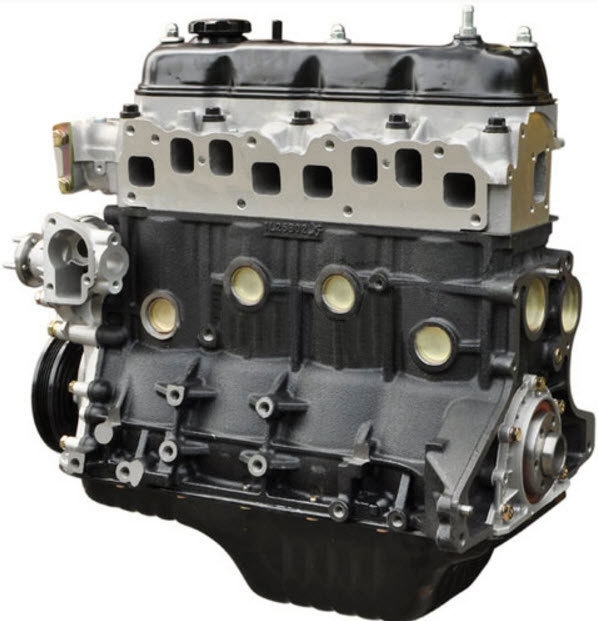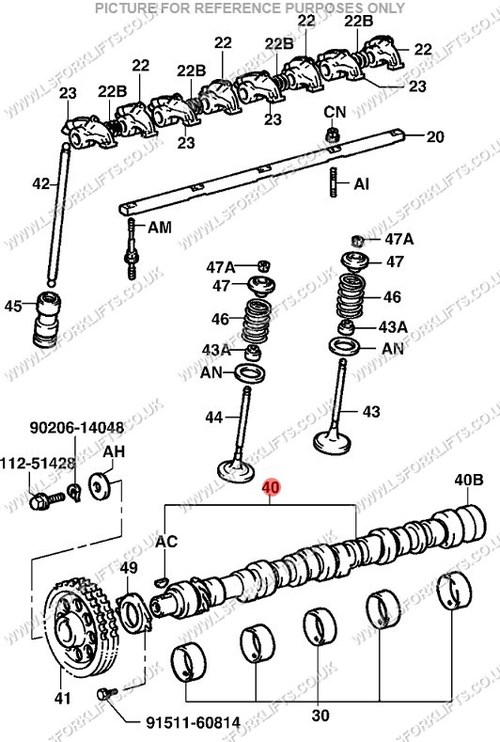How to Ensure Proper Care for Your 4Y Engine to Avoid Expensive Repairs
How to Ensure Proper Care for Your 4Y Engine to Avoid Expensive Repairs
Blog Article
The Ultimate Guide to the Engine: Trick Insights for every single Automobile Lover
Understanding the engine is fundamental for any vehicle lover, as it offers as the heart of the automobile and dictates its efficiency. The intricacies of engine characteristics and the most recent developments in technology present concerns that warrant more expedition.
Anatomy of an Engine
Understanding the anatomy of an engine is vital for any vehicle lover looking to dive much deeper into automobile mechanics. An interior combustion engine primarily contains numerous vital parts that work in unison to convert fuel into power.
At the heart of this system lies the cylinder block, which houses the cylinders where combustion takes place. Piston motion within these cyndrical tubes is promoted by the crankshaft, which translates direct activity right into rotational energy. Additionally, the camshaft plays an essential duty in controlling the opening and closing of the engine's valves, making certain correct air-fuel blend intake and exhaust gas expulsion.
Other vital parts include the gas system, which supplies the engine with the necessary gas, and the ignition system, in charge of starting combustion - 4y engine. The air conditioning and lubrication systems are additionally indispensable, maintaining optimal operating temperature levels and lowering rubbing, specifically
Engine Types and Configurations
A diverse range of engine kinds and configurations exists, each offering special benefits and drawbacks customized to different driving needs and preferences. The most usual engine kinds include inline, V, level, and rotating setups.
Inline engines, featuring cyndrical tubes set up in a solitary line, are recognized for their simpleness and performance. They are commonly discovered in small cars, using an equilibrium of power and economy. V engines, characterized by their two financial institutions of cyndrical tubes set up in a V form, give higher efficiency and smoother procedure, making them prominent in sports and luxury cars.
Level engines, or boxer engines, have flat opposed cyndrical tubes, which add to a reduced facility of gravity, boosting vehicle stability. These are generally seen in brands like Subaru and Porsche.
Rotating engines, although less common, utilize a distinct design with a triangular rotor and offer high power-to-weight ratios. They excel in lightweight and compact applications, primarily seen in Mazda cars.
Each engine type serves specific performance features, weight circulations, and fuel effectiveness, making sure that auto enthusiasts can select the ideal engine configuration to match their driving style and car requirements.

How Engines Work
Engines, regardless of their type or configuration, operate on basic concepts that govern their performance and effectiveness. At their core, engines transform gas into mechanical power with a collection of regulated surges or compressions. This procedure generally involves 4 major strokes: consumption, exhaust, compression, and power.
Throughout the consumption stroke, the engine attracts a mixture of air and fuel. The compression stroke complies with, where the mixture is pressed in the cyndrical tube, increasing its temperature level and stress. In the power stroke, a spark ignites the compressed combination (in fuel engines) or the mix fires up automatically (in diesel motor), leading to a fast growth of gases that presses the piston down. Lastly, the exhaust stroke gets rid of the invested gases from the cyndrical tube.
The efficiency of an engine is affected by various variables, including the style of the combustion chamber, the kind of gas made use of, and the accuracy of the engine's components. Comprehending these essential concepts is critical for automobile lovers who look for to appreciate the elaborate technicians behind their vehicles, in addition to for those intending to boost performance via adjustments and tuning.
Developments in Engine Modern Technology
In the last few years, advancements in engine technology have actually substantially changed the vehicle landscape, improving both efficiency and ecological sustainability. One of the most remarkable developments is the growth of turbocharging and supercharging, which enables smaller sized engines to create higher power outputs without giving up fuel effectiveness. This has brought about an increase in the appeal of downsized engines, providing manufacturers with the capability to satisfy strict exhausts guidelines while maintaining efficiency criteria.
Furthermore, crossbreed and electrical powertrains are reshaping the engine standard. Hybrid systems combine interior burning engines with electric motors, enhancing fuel consumption and decreasing discharges. Completely electric automobiles (EVs) remove the burning engine entirely, counting on sophisticated battery technology to supply instant torque and outstanding acceleration.
Furthermore, the assimilation of expert system and maker learning in engine monitoring systems allows for real-time optimization of efficiency specifications, boosting effectiveness and responsiveness. Advancements such as variable valve timing and straight fuel shot additionally improve burning procedures, making best use of power outcome while decreasing waste.
As the auto sector continues to progress, these developments in engine modern technology will certainly play a critical function fit the future of wheelchair, focusing on both efficiency and sustainability.
Maintenance Tips for Lovers
Preserving an engine is as vital as the developments that enhance its efficiency. Normal maintenance not only extends the life of your engine but likewise ensures ideal efficiency.
Examine and replace air filters regularly to make sure correct air flow, which is crucial for burning effectiveness. A blocked air filter can result in decreased performance and boosted fuel consumption. In a similar way, keep an eye on the coolant degrees to stop getting too hot, and replace coolant according to the service timetable.

Conclusion
In conclusion, an extensive understanding of engine composition, types, and mechanics see this here is necessary for vehicle fanatics. Routine upkeep techniques, including oil adjustments and air filter checks, are essential for guaranteeing optimal engine functionality and longevity.

Engines, Bonuses no matter of their kind or arrangement, run on fundamental concepts that govern their performance and performance. In the power stroke, a stimulate ignites the pressed combination (in gas engines) or the combination ignites spontaneously (in diesel engines), resulting in a quick growth of gases that presses the piston down.In recent years, developments in engine innovation have substantially transformed the important link vehicle landscape, boosting both performance and environmental sustainability.
Report this page